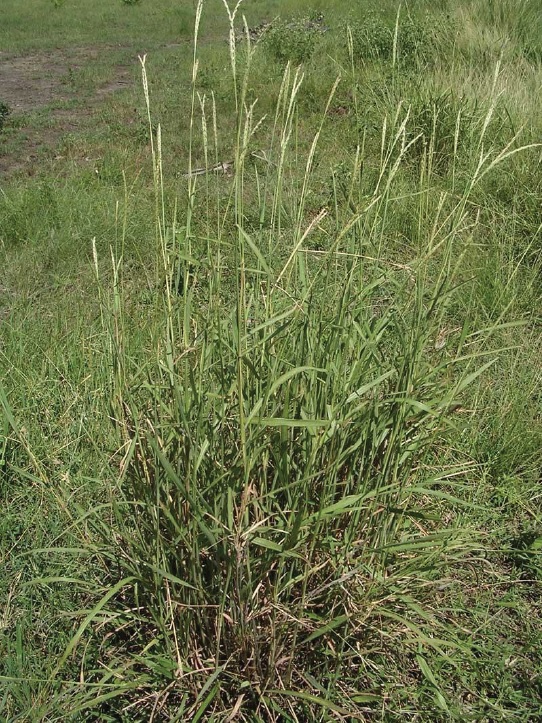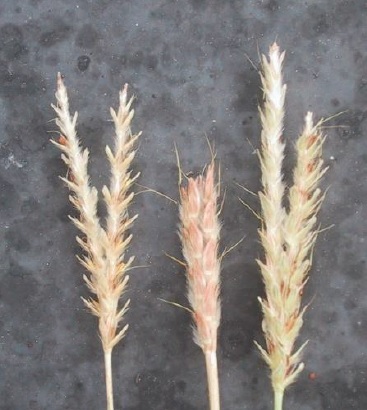Large Bluegrass – Ischaemum australe
Name
Ischaemum is from the Greek ischo (to restrain) and haima (blood), as woolly seeds of the type species were reported as being used to stop bleeding; australe, from the south (Australia).
Description
Ischaemum australe is an erect, tufted, rhizomatous perennial 50–120 cm tall. The inflorescence, 3–10 cm long, may appear to be a simple spike, but is composed of two erect, closely appressed branches; as the seeds mature the branches come apart and become fragile and readily break at the joints.
Distribution and Habitat
Large Bluegrass is native to Australia and tropical Asia. It grows in coastal areas in wet situations, swamps and poor sandy soils.
Ecological Notes
This grass appears to be a good species for revegetation of wetland areas: it has robust rhizomes (underground stems) which give the plant the potential to compete with weedy nonnative species. It can survive growing in water for long periods during the wet season.
Propagation
Seeds need to be stored for 10 months to overcome dormancy.
References
- Gardner CA (1952) Flora of Western Australia Vol. 1, Part 1. In ‘Gramineae’. (Government Printer:Perth)
- Jacobs SWL, Whalley RDB, Wheeler DJB (2008) ‘Grasses of New South Wales (Fourth Edition).’ (University of New England: Armidale)
- Sharp D, Simon BK (2002) AusGrass: grasses of Australia. CD-ROM, Version 1.0. (Australian Biological Resources Study: Canberra, and Environmental Protection Agency: Brisbane)
- Simon BK (1993) ‘A Key to Australian Grasses.’ (Qld Dept Primary Industries: Brisbane)
- Tothill JC, Hacker JB (1983) ‘The grasses of southern Queensland.’ (University of Queensland Press:St Lucia)
Related Pages
Large Bluegrass © C.Gardiner JCU Townsville 2012




